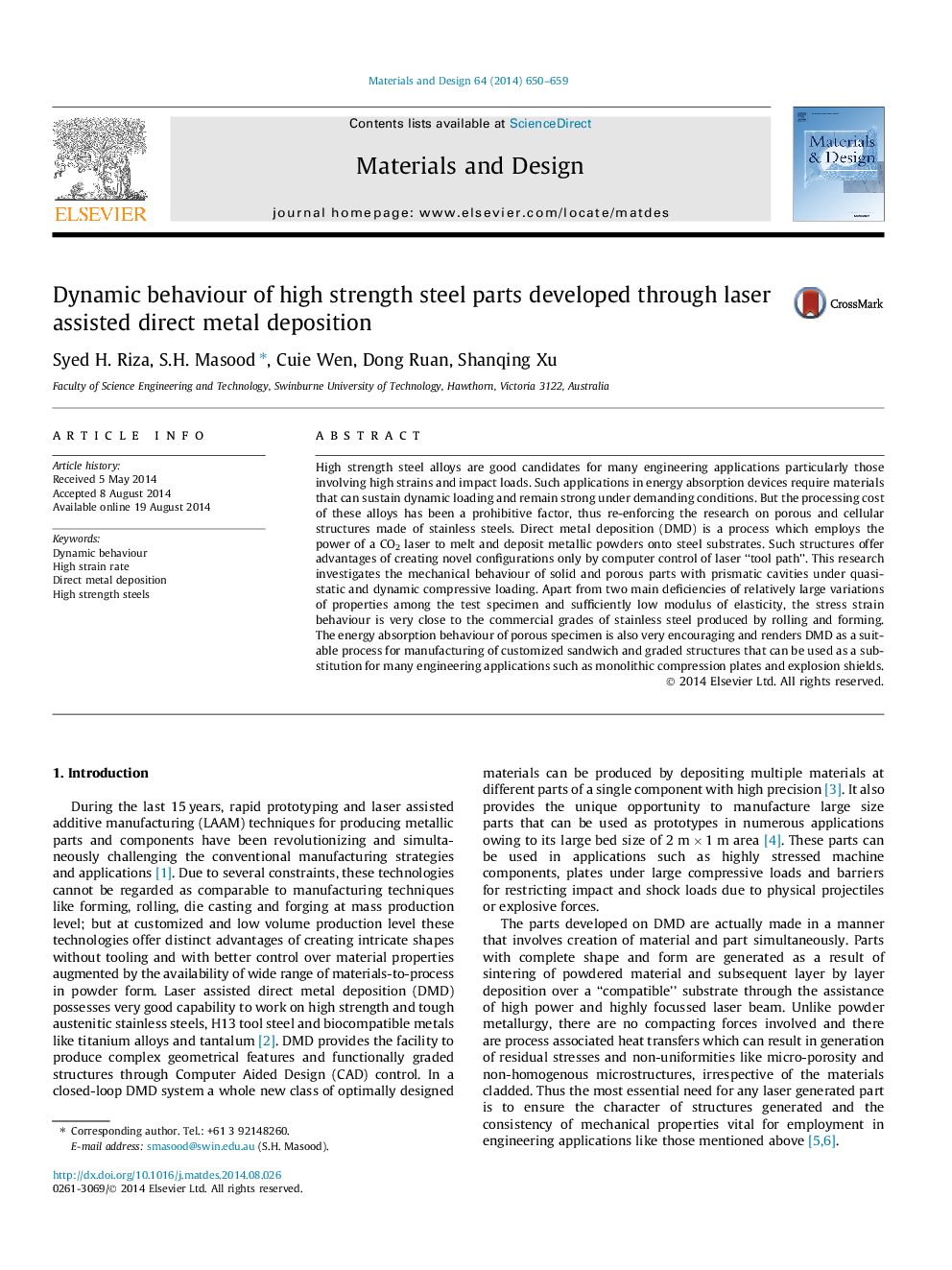| Article ID | Journal | Published Year | Pages | File Type |
|---|---|---|---|---|
| 828952 | Materials & Design (1980-2015) | 2014 | 10 Pages |
•Dynamic compressive behaviour of laser generated high strength steels on DMD.•Solid and porous DMD parts subjected to high strain rate and quasi-static loading.•Solid and porous specimens show different behaviour related to absorption of impact.•Significant strain hardening under dynamic loading for both H13 and 316L steels.•Novel energy absorption behaviour of porous steel specimens.
High strength steel alloys are good candidates for many engineering applications particularly those involving high strains and impact loads. Such applications in energy absorption devices require materials that can sustain dynamic loading and remain strong under demanding conditions. But the processing cost of these alloys has been a prohibitive factor, thus re-enforcing the research on porous and cellular structures made of stainless steels. Direct metal deposition (DMD) is a process which employs the power of a CO2 laser to melt and deposit metallic powders onto steel substrates. Such structures offer advantages of creating novel configurations only by computer control of laser “tool path”. This research investigates the mechanical behaviour of solid and porous parts with prismatic cavities under quasi-static and dynamic compressive loading. Apart from two main deficiencies of relatively large variations of properties among the test specimen and sufficiently low modulus of elasticity, the stress strain behaviour is very close to the commercial grades of stainless steel produced by rolling and forming. The energy absorption behaviour of porous specimen is also very encouraging and renders DMD as a suitable process for manufacturing of customized sandwich and graded structures that can be used as a substitution for many engineering applications such as monolithic compression plates and explosion shields.
